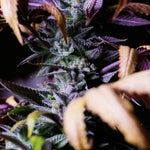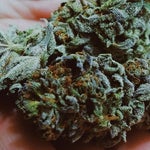The Art of Cooking with Weed
Cooking with weed, also known as edibles, is gaining popularity among cannabis users. Unlike smoking, edibles provide a more intense and longer-lasting high. However, cooking with weed requires knowledge and skills to ensure that the dosage is consistent and the taste is pleasant.
The Benefits of Cooking with Weed
Cooking with weed offers several benefits. First, it provides a discreet and healthier way to consume cannabis. Second, it allows users to customize their dosage and enjoy the effects for a longer time. Third, it offers a new and exciting way to experiment with food and enhance the culinary experience.
The Science of Cooking with Weed
The active ingredient in weed, THC, is not water-soluble, which means it cannot dissolve in water. Instead, THC binds to fat molecules, which makes it perfect for cooking with oil or butter. To activate the THC in weed, it needs to be heated to a certain temperature, a process known as decarboxylation. Decarboxylation converts the inactive THCA to active THC, which is responsible for the psychoactive effects of weed.
The Dos and Don’ts of Weed Cooking
Before embarking on the journey of making weed edibles, there are several dos and don’ts to keep in mind.
Dos
- Start with a small amount of weed and gradually increase the dosage until you find your sweet spot.
- Use high-quality weed, preferably from a reputable dispensary.
- Use a kitchen scale to measure the amount of weed accurately.
- Use unsalted butter or oil to extract THC from the weed.
- Decarboxylate the weed before cooking to activate the THC.
- Use a thermometer to ensure that the temperature does not exceed 350°F (177°C).
Don’ts
- Don’t use too much weed, as it can lead to an unpleasant experience.
- Don’t use low-quality weed, as it can contain contaminants and affect the taste and potency of the edibles.
- Don’t use salted butter, as it can affect the taste and spoil the dish.
- Don’t skip the decarboxylation step, as it is crucial for the THC to take effect.
- Don’t overheat the mixture, as it can destroy the THC and render the edibles ineffective.
Common Mistakes to Avoid
Cooking with weed can be a tricky process, and there are several mistakes to avoid to ensure that the edibles are potent, tasty, and safe to consume.
Overdoing the Dosage
One of the most common mistakes is using too much weed or not measuring the dosage accurately. This can lead to an unpleasant experience, such as anxiety, paranoia, or even a trip to the emergency room. To avoid overdoing the dosage, start with a small amount and gradually increase it until you find the right dosage for you.
Not Decarboxylating the Weed
Another common mistake is skipping the decarboxylation step, which is essential for activating the THC. Without decarboxylation, the edibles will not produce the desired effects, and you will be left with a bland and ineffective dish.
Using the Wrong Strain
Choosing the right strain for your edibles is crucial for achieving the desired effects. Some strains are more energizing and uplifting, while others are more sedative and relaxing. Make sure to research the strain’s effects before using it in your edibles.
Conclusion
Cooking with weed is an art that requires knowledge, skills, and patience. By following the dos and don’ts, avoiding common mistakes, and experimenting with different strains and recipes, you can create delicious and potent edibles that offer a unique and enjoyable way to consume cannabis.











